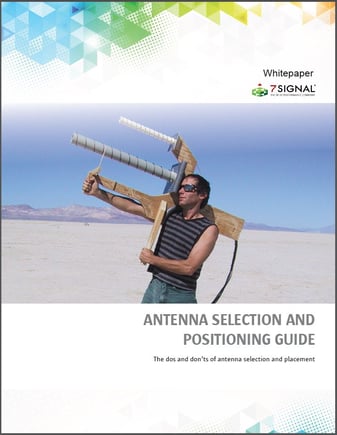After all the effort invested in selecting a WLAN vendor and planning an Enterprise wireless LAN, many customers underestimate the importance of antenna selection and careful placement, and end up settling for lower performance than they were expecting. The purpose of this guide is to give you a straightforward and not overly technical overview of antenna design, to provide guidance on  choosing the right antenna and maximizing coverage and capacity, and to identify common antenna deployment mistakes to be avoided.
choosing the right antenna and maximizing coverage and capacity, and to identify common antenna deployment mistakes to be avoided.
Throughout the guide, references to performance and coverage are primarily targeted toward 802.11n deployments, which are the majority use case today. Exceptions accounting for 802.11ac will be identified.
Antennas 101
The world of antennas is rife with technical jargon for a range of related features that together result in a wireless signal with a certain range and radiation profile. It can be quite difficult to grasp how the various factors interplay. So let’s quickly review how an antenna system works.
How antennas work
Whether it is for Wi-Fi or 4G or another wireless technology, an antenna is basically an extension of a wireless radio. The principles are the same for all wireless systems. The range of an antenna is the result of several factors. The first of which is the amount of energy entering the system, which is known as the radio transmit power (Tx). As the radio energy passes through connectors and cables to the antenna, some of it is lost. This is known as cable loss.
Finally the remaining energy is concentrated in a certain radiation pattern, depending on the design and polarity of the antenna. Different antenna materials and design features result in different antenna gain. The gain of the antenna defines how concentrated the energy is – Thus the combination of Tx power, cable loss and antenna gain, define the antenna’s range. The radiation pattern, that is the 3D shape of the radio waves...
Get the Guide